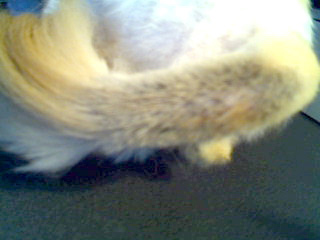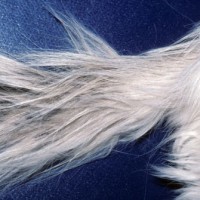Cats and humans are not too far apart when it comes to life. As a teenager, you can probably recall waking up in the morning to find one or several pimples scattered across your face. This condition, known as acne, was a result of the oil glands located at the base of your hair follicles being stimulated and producing large amounts an oily liquid called sebum as a result. The sebum would then carry dead skin cells into the follicles and through to the surface of your skin. Then, small hair would begin penetrating the follicles and showing up on your skin. When these follicles are blocked, oil begins to build up beneath the skin and pimples are formed. Feline stud tail, a skin infection found in cats, is similar to when acne occurs in humans after too much secretion is released from the sebaceous glands. However, by following the proper steps and providing your cat’s condition with generous attention, feline stud tail can be prevented. The first step is being able to recognize stud tail in its earliest stages.
Signs and Symptoms
 As stud tail first sets in on your cat, you may notice a foul odor begin to emit from it; the hair at the base of the tail will become knotted, oily, and much darker than the hair at the tip of its tail. Over a short period of time, the hair will also begin to grow thinner before eventually fall out. Then, a waxy substance will form around the tail and blackheads—also known as comedones—will begin to emerge from the infected area as well.
As stud tail first sets in on your cat, you may notice a foul odor begin to emit from it; the hair at the base of the tail will become knotted, oily, and much darker than the hair at the tip of its tail. Over a short period of time, the hair will also begin to grow thinner before eventually fall out. Then, a waxy substance will form around the tail and blackheads—also known as comedones—will begin to emerge from the infected area as well.
Causes
The condition that causes stud tail in the first place is similar to what is found in teenagers who are entering into the early stages of puberty. Located at the base of the tail is the supracaudal gland, which contains sebaceous glands; these glands produce an oily substance called sebum. Skin infection occurs as a result of these glands secreting excessive amounts of sebum. Stud tail is a condition mostly associated with male cats that still have their reproductive organs intact; their male hormones will produce large amounts of sebum naturally. While stud tail occurring unneutered male cats is the rule, the condition still has a possibility of infecting neutered male cats, as well as female cats.
Treatment
In order to properly treat feline stud tail, it is recommended that you wash around your cat’s tail area twice a day with a medicated shampoo, specifically antiseborrheic shampoo, which will be discussed further on in more detail. Additionally, the hair in this region may be cut off in order for the shampoo to more effectively penetrate the infected area. Also, sprinkling baby powder or even cornstarch along the base of the tail has been known to alleviate the infection. If necessary, male cats with stud tail may be neutered to ensure that the condition does not reoccur.
Review of Douxo Seborrhea Shampoo
Douxo Seborrhea Shampoo is the ideal shampoo to help treat your cat’s stud tail, as it will prevent further inflammation in the infected area while also moisturizing it and eliminating any resulting odors. The shampoo also includes a foaming solution, which contains hypoallergenic refining bases, as well as film-foaming and moisturizing agents that will help do away with cellular residue and put a stop to excess sebum buildup within the glands, while also controlling the production of sebum.In order to prevent feline stud tail from occurring in the first place, it is best to regularly bathe your cat while also maintaining good grooming habits.



[…] The rest is here: Feline Stud Tail: Not A Good Look | The Cat Dandruff Clinic […]
[…] Stud Tail will present with a waxy brown substance on the cats tail at the base. Treatments with special shampoos twice daily will usually prevent this condition. Corn starch and baby powder applied to the tail after shampooing will also help to alleviate the condition. […]